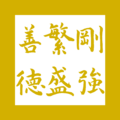National symbols of Hoterallia
Jump to navigation
Jump to search
National symbols of Hoterallia are the symbols that are used in Hoterallia to represent what is unique about the nation, reflecting different aspects of its cultural life and history.
| Symbol | Image | Notes | |
|---|---|---|---|
| Flag | Flag of Hoterallia | The current official flag was adopted in 1950, shortly after the Second Reunification War of Hoterallia has ended, the flag represents the unification of Western and Eastern Hoterallia after the decade-long civil war. | |
| Coat of arms | Imperial Seal of Hoterallia | The Imperial Seal is the Kamon of the Royal Family of Shiro, the centuries-long ruling dynasty of Hoterallia. The Kamon shows a Phoenix (symbol of the Shiro) encircling the sun (symbol of Hoterallia). | |
| As Long As The Emperor Lives 天皇が生きている限り Patriotic March 愛国行進曲 |
As Long As The Emperor Lives Patriotic March |
Hoterallia has two anthems, one to represent the people of Hoterallia and the nation (Patriotic March), while the other represents the spirits, traditions, and the Empire (As Long As The Emperor Lives). | |
| Seal | National seal Kokuji |

|
Adopted 1824, most commonly used for purposes of state (constitutionally) in Hoterallia. |
| National motto | "天皇陛下万歳" (Royal) "剛強、繁盛、善徳。" (National) |
"Long Live His Majesty the Emperor!" "Strength, Prosperity, Virtue." |
Hoterallia has two mottos, one is used to pay respect for the Imperial Family of Shiro that been leading Hoterallia for centuries, the other is the the traditional focuses of Hoterallian of The Three Goals (三つの目標). |
| National mountain | Mount Koku | The highest mountain in Hoterallia | |
| National sport | Tsuyo | ||
| National poet |
|
|






